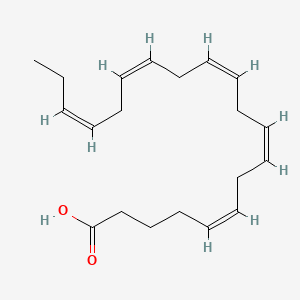| Liu Q et al. |
Dietary n-6:n-3 ratio and Vitamin E improve motility characteristics in association with membrane properties of boar spermatozoa. |
2017 Mar-Apr |
Asian J. Androl. |
pmid:26763547
|
| Burak C et al. |
Effects of the flavonol quercetin and α-linolenic acid on n-3 PUFA status in metabolically healthy men and women: a randomised, double-blinded, placebo-controlled, crossover trial. |
2017 |
Br. J. Nutr. |
pmid:28366181
|
| Yoshikata R et al. |
Relationship between equol producer status and metabolic parameters in 743 Japanese women: equol producer status is associated with antiatherosclerotic conditions in women around menopause and early postmenopause. |
2017 |
Menopause |
pmid:27676633
|
| Neuman JC et al. |
Enriching Islet Phospholipids With Eicosapentaenoic Acid Reduces Prostaglandin E2 Signaling and Enhances Diabetic β-Cell Function. |
2017 |
Diabetes |
pmid:28193789
|
| Aslan Ä° et al. |
Decreased eicosapentaenoic acid levels in acne vulgaris reveals the presence of a proinflammatory state. |
2017 |
Prostaglandins Other Lipid Mediat. |
pmid:28025036
|
| Lee Y et al. |
Analysis of endogenous lipids during intestinal wound healing. |
2017 |
PLoS ONE |
pmid:28800645
|
| Nakamura K et al. |
Eicosapentaenoic acid prevents arterial calcification in klotho mutant mice. |
2017 |
PLoS ONE |
pmid:28771600
|
| Yilmaz JL et al. |
Determination of Substrate Preferences for Desaturases and Elongases for Production of Docosahexaenoic Acid from Oleic Acid in Engineered Canola. |
2017 |
Lipids |
pmid:28197856
|
| Liu Y et al. |
Eicosapentaenoic Acid-Enriched Phosphatidylcholine Attenuated Hepatic Steatosis Through Regulation of Cholesterol Metabolism in Rats with Nonalcoholic Fatty Liver Disease. |
2017 |
Lipids |
pmid:28012135
|
| Senftleber NK et al. |
Marine Oil Supplements for Arthritis Pain: A Systematic Review and Meta-Analysis of Randomized Trials. |
2017 |
Nutrients |
pmid:28067815
|
